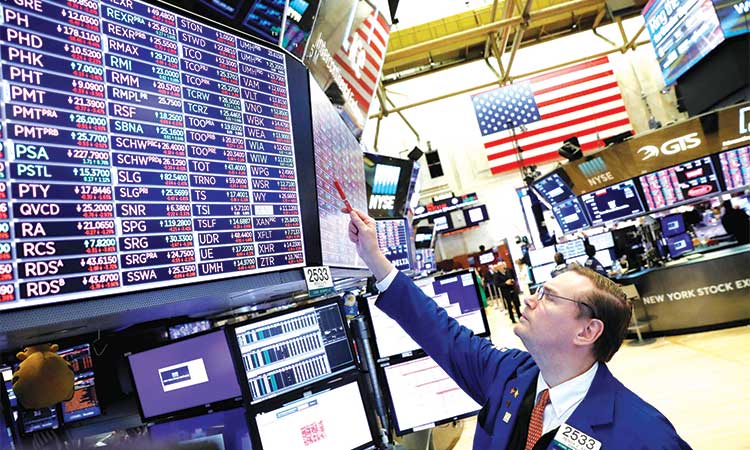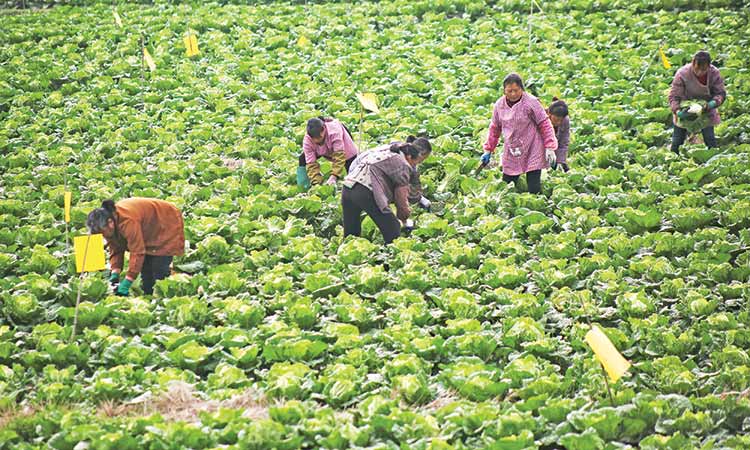Fitch cuts China’s 2022 GDP forecast to 4.3% from 4.8%

A worker speaking on his phone walks past a construction site in Beijing, China. Reuters
The rating agency said it stills expects a quarter-over-quarter GDP contraction in the second quarter, before the economy starts to recover.
Fitch raised its 2023 growth forecast for the country slightly higher to 5.2 per cent from 5.1 per cent.
Meanwhile the Hong Kong’s economy contracted in the first quarter of this year as the city imposed its most stringent restrictions to curb an outbreak of COVID-19 that has battered business, led to an exodus of people and overshadowed the outlook for growth.
The financial centre’s economy shrank 4 per cent in the first quarter from a year earlier, breaking four quarters of growth, amid weak performance in both domestic and external demand, the government said.
That compares with revised growth of 4.7 per cent in the fourth quarter and forecasts for a 1.2 per cent decline by DBS and 1.3 per cent drop by Standard Chartered for the first quarter.
“The global economy will continue to face significant challenges in the near term,” a government spokesman said in a statement, adding that improving the local epidemic situation and government support measures should help lift domestic demand for the remainder of the year.
Hong Kong’s borders have essentially been closed since early 2020, with few flights landing and hotel quarantine for arrivals damping demand, as the city follows mainland China in implementing a “dynamic zero” coronavirus strategy that aims to curb all outbreaks.
“Timing of re-opening of border will hinge crucially on the COVID situation in both China and Hong Kong,” said Samuel Tse, an economist at DBS Bank. “Our most optimistic assumption is that it will gradually reopen around end of 3rd quarter to mid 4th quarter.”
On a quarterly basis, the economy shrank by a seasonally adjusted 2.9 per cent in January-March.
Hong Kong’s economy is expected to grow 2.0 per cent to 3.5 per cent this year after expanding 6.4 per cent in 2021, with underlying inflation at 2 per cent.
Hong Kong allowed non-residents to enter the financial hub from May for the first time in more than two years as the number of daily COVID-19 infections fell, a small step in unwinding stringent restrictions which have turned the city into one of the world’s most isolated places.
Meanwhile oil slipped almost 1 per cent on Tuesday as concerns about the demand outlook due to prolonged COVID lockdowns in China outweighed support from a possible European oil embargo on Russia over its actions in Ukraine.
Beijing, reporting dozens of new cases daily, is mass-testing residents to avert a lockdown similar to Shanghai’s over the past month. The capital’s restaurants were closed for dining in, and some apartment blocks were sealed shut.
Brent crude was down 77 cents or 0.7 per cent, at $106.81 a barrel at 1202 GMT. US West Texas Intermediate (WTI) crude dropped $1.09, or 1 per cent, to $104.08.
“The positive driver has been the EU embargo and whether that will be announced,” said Commonwealth Bank commodities analyst Vivek Dhar. “Your negative driver is Chinese COVID lockdowns. They’re both very important thematics.”
Oil has hit multi-year highs this year, with Brent reaching $139 in March, the highest since 2008, after Moscow’s invasion of Ukraine exacerbated supply concerns that were already fuelling a rally.
The increasing prospect of EU sanctions on Russia lent support.
The European Commission is expected to finalise on Tuesday work on the next package of EU sanctions against Russia, which would include a ban on buying Russian oil.
“A potential EU-wide oil embargo could significantly undermine the already diminishing availability of Russian barrels,” said Tamas Varga of oil broker PVM.
Also in focus will be the latest round of US inventory and supply reports. Five analysts polled by Reuters on average expect US crude inventories fell by 1.2 million barrels in the week to April 29.
The American Petroleum Institute industry group issues its inventory report at 2030 GMT, followed by government figures from the Energy Information Administration on Wednesday.







